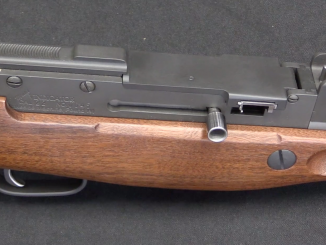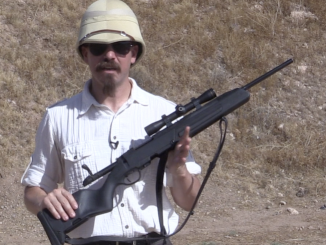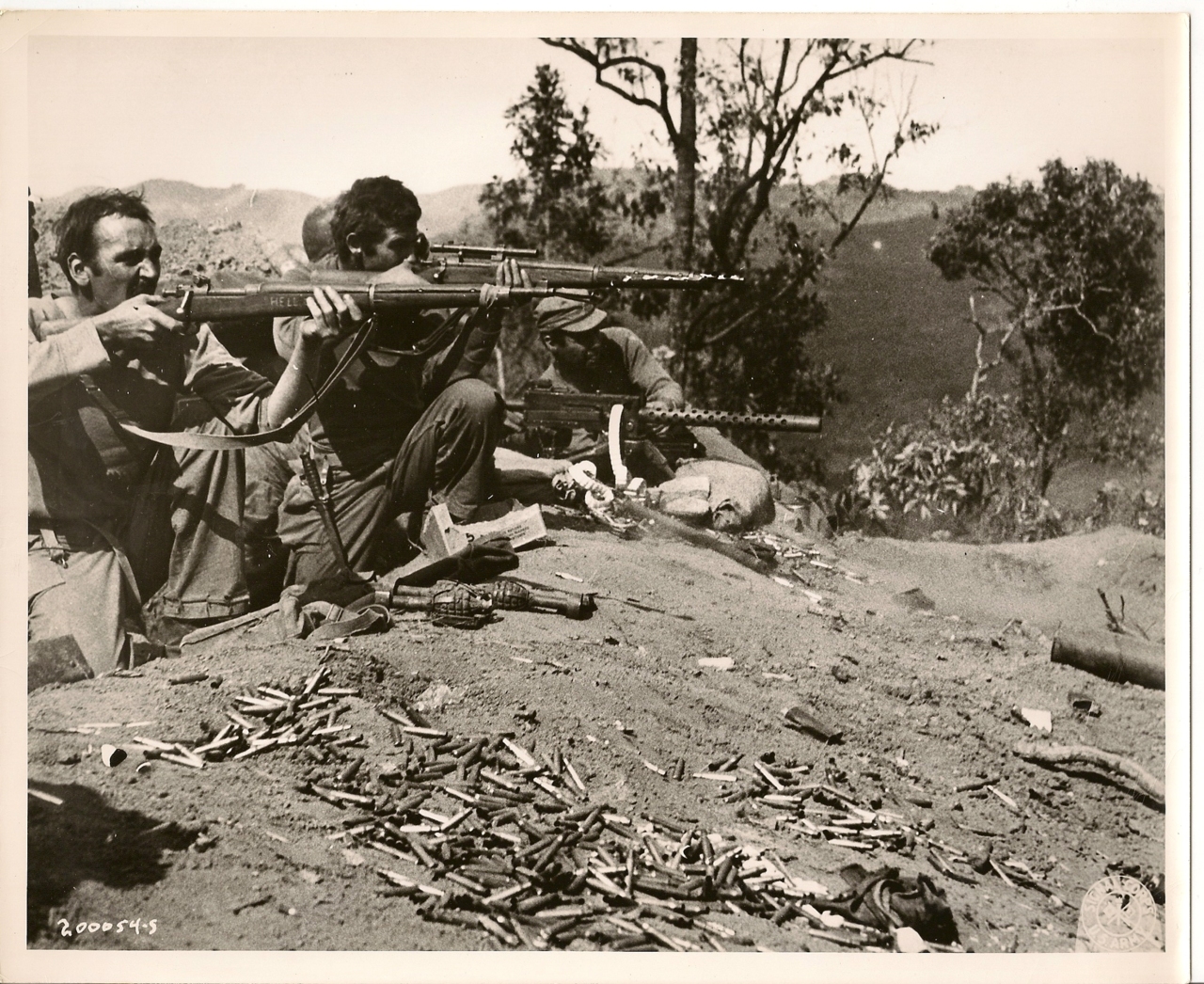Lot 1193 in the September 2020 RIA Premier auction.
John Hall designed the first breechloading rifle to be used by the United States military, and the first breechloader issued in substantial numbers by any military worldwide. His carbines would later be the first percussion arms adopted by any military force. Hall developed a breechloading flintlock rifle in 1811, had it tested by the military in 1818, and formally adopted as a specialty arm in 1819.
Hall’s contribution actually goes well beyond having a novel and advanced rifle design. He would be the first person to devise a system of machine tools capable of producing interchangeable parts without hand fitting, and this advance would be the foundation of the American system of manufacturing that would revolutionize industry worldwide. Hall did this work at the Harpers Ferry Arsenal, where he worked from 1819 until his death in 1841.
I plan to expand on the details of a variety of Hall rifle models in future videos, and today is meant to be an introduction to the system. Because it was never a primary arm in time of major war, Hall is much less well recognized than he should be among those interested in small arms history.




I have always liked the story that the Hall breechblock when detached from the rifle could be used as a pistol
I have read that the cavalry equipped with Hall’s sometimes removed the lock and carried it concealed as a handgun off post.
I read that a U.S. soldier in Mexico, during the Mexican-American War, carried a loaded Hall breechblock with him when he participated in a dance held by the local townsfolk. He used this improvised pistol to hold off men, armed with knives, that decided he was unwelcome.
Back in the 1960’s I had the opportunity to fire a percussion version of this rifle. Even though the percussion system produced less of a powder “blast” right in front of your face it could be disconcerting none the less to the shooter. But as to the gas leakage, yes, definitely a noticeable “poof” in the face, not painful, but definitely there adding to the annoying cap flash of ignition. Added together, not much fun for the modern shooter unused to such shenanigans. But I’d love to do it again!
I forgot……since paper cartridges where issued at that time, there was the danger that if there was a fragment of paper still smoldering in the chamber when you inserted the fresh round…….well, there went your thumb down range! I wonder if that got you a medical discharge with full benefits?
The Hall was not normally loaded with paper cartridges. It was loaded with loose powder and ball from a special powder flask designed specifically for it by Hall, containing both powder delivered via an automatically measuring springloaded spout, and a tubular magazine that delivered a single ball each time its lever was tripped;
https://fws-files.s3.amazonaws.com/uploads/website/auctions/items/full/3266583_3.jpg
The Hall flask is unique; no other U.S. martial flask is exactly like it. In spite of this, due to the low survival rate, it was not definitely identified by collectors and historians until the late 1970s.
cheers
eon
I always thought the Kammerlader was first. Nice video! Please use light background (table cloth etc) material, because you loose a lot of detail now in the dark.
Lose
A background having a similar brightness as the presented object is actually the best to bring out the details. Ian is doing it right.
The Mexican War percussion breechblock story was in at least one of my gun books pre-Internet. Look forward to Ian chasing that down.
Didn’t percussion lock Hall rifles (or variants) see wide use in the 1848 Mexican-American War?
That war had such enormous strategic outcomes and consequences it might be said to be the war which made the United States.
With standard side lock flintlocks the touchhole is on the side of the rifle or musket. Most flint shooters go to some length to some length to ensure the touchhole is kept clear when priming the pan. The reason for this is that to have powder filling the hole creates a “fuse effect” which results in a hang fire. It creates a faster and more reliable ignition to have a clear flash hole. I suspect Hall shooters did the same. Perhaps using broom straw or some type of metal pick inserted in the hole when priming.
Somebody somewhere in modern times must have fired some groups with a Hall, perhaps with a good Kaintuckee firelock for a control. Heck, I’d do it.
Wearing a facemask and gauntlets, and perhaps a fireproof smock, you understand.
Congratulations to Mr Hall for getting effective interchangeability. Too band Harrington and Richardon hadn’t got the memo when making the Reising submachinegun 120 year later.
Way too many people fall for “hand-fitted craftsmanship” as why they should buy older firearms.
“(…)capable of producing interchangeable parts without hand fitting(…)”
History of interchangeable parts has own query in Wikipedia:
https://en.wikipedia.org/wiki/Interchangeable_parts
it states massively produced interchangeable parts were achieved by Sir Marc Isambard Brunel in 1803, regarding pulley blocks. This is earlier than Hall and lead to question if Hall was aware of such production or he developed his system independently.
Well, we might credit Hall with being the first to do it with a metal (or combination metal and wood) product, rather than with only wood. Though Brunel’s wooden pulley blocks probably won the Napoleonic wars. Interesting how much manufacturing progress is in the service of the military, no?
Dear Mr. M: I hesitate to advise on the English language to someone who has written and published a book, but might you use the words “long arm” or “firearm” (or even “gun”) when in danger of confusing “musket” and “rifle” (and the later “rifled musket”)? And could you find any better descriptive word than the much over-used “cool”? (Neat! Fascinating! Impressive! Interesting! Wonderful!) Though thanks again for all the cool things you show us.
Brunel blocks have wooden and iron components.
“Interchangeable parts”
Hmmmm
My limited DROID keyboard doesn’t do [trademark] symbols.
I suspect that even if “filing” wasn’t usually needed, there would usually be some fairly significant and skilled fitting needed to get decent function.
Even in the days of the FAL, and as scrupulous and well equipped a manufacturer as FN (their versions of the Browning designs are definitely to be preferred over the American manufactured ones), there was selected assembly. Selected assembly probably continued well after that.
There in itself is a reason why American gunzines have pushed the idea that no rifle is complete without a fully adjustable trigger
Why?
Well because certain American manufacturers wanted to produce rifles with abysmal tolerance powder metal or MIM parts, that also wore rapidly.
A few twiddles with an Allen key and a squirt of specially dyed sealant into the adjustment screws at the factory, got it sort of working
Then when you tried to unload it and it went off and shot you, your dog, your friend or family member… and in all too many examples (see the class actions against a certain American manufacturer for exactly those events and check out Jack Belk’s book “unsafe by design” for the full reasoned argument).
Well, it was your fault for taking the sealant out, but you bought it because the gunzines preached the BS gospel of “fully adjustable trigger”
“Mark Twain”‘s definition of a mine is probably pertinent in any discussion of “fully interchangeable parts”
According to “Twain” the Cornish definition (a hole in the ground with a cornishman at the bottom) must have been looking into the wrong direction
The “Twain” definition was a hole in the ground with a con man at the top.
Fully interchangeable with what?
I saw an interview with a WWII British tank mechanic in a video, “Tank Rebuild”. He mentioned that when he got spare parts for his tanks back then, he had to make them fit, but the American mechanics got parts that generally worked right out of the box.
Some thoughts
1) Springfield Arsenal Museum has some of the machinery used to make interchangable parts on display and some are powered up and operating
2) Re the “American System” – it was so impressive that a technical mission from the Royal Small Arms Factory Enfield Lock visited Springfield and several other Connecticut Valley arms manufacturers around 1850 with an eye to learning the Yankee’s secrets.
3)Riflemen were a specialized form of light infantry until the wide-spread adoption of the Minie system
“Smooth-bore weapons, such as the musket, had always been recognized as relatively inaccurate, especially at longer ranges, and required massed volleys to be combat-effective. Although the smoothbore barrels impeded the accuracy of a musket, it was an advantage when loading because the looser fitting musket ball slid down the barrel quickly and easily with the ramrod being used mainly to compress the powder charge at the base of the barrel. Rifles required a tighter fit and thus more work to get the ball to be rammed all the way down the barrel. This meant that the soldiers chosen for this role needed to be good shots, resilient, brave, and resourceful. Riflemen were trained to act in isolation and were dispersed in teams of two, defending each other while they re-loaded. They were still vulnerable, especially to cavalry, as they could not present the solid wall of bayonets a larger mass of soldiers could. These factors: the time and expense required in training, the limited number of suitable recruits, and the specialized roles and situations where they were most effective meant they were highly prized, given special privileges, and used sparingly rather than squandered.
Such rifle units reached their heyday in the period shortly before and during the Napoleonic Wars, with the British riflemen partially derived from units of colonial militia (see Rogers’ Rangers or the Royal Americans) — truly excelling in the American War of Independence. Regular units of rifles formed in the British Army in 1800 were the 60th Regiment of Foot and the 95th Regiment of Foot. These units were often given the name “light infantry”, emphasizing their specialized roles. Both gained fame as part of “Black Bob” Craufurd’s immortal Light Division
Starting in the 1840s, with the advent of the Minié ball and the first military breech-loading rifles, the rifles entered the age of industrialized warfare. It was mass-produced and accessible to all infantrymen. The high level of training and specialized roles gave way to generality: the rifles were much faster and simpler to load, able to be reloaded while prone, and impossible to be double-loaded after a misfire. The term ‘rifleman’, once used solely as a mark of distinction and pride, became a commonplace description of all infantry, no matter what their actual status was. Nevertheless, the term retained a certain élan that is still found today.”
In 1808, the United States Army created its first Regiment of Riflemen. During the War of 1812 three more Rifle Regiments were raised but disbanded after the war. The Rifle Regiment was disbanded in 1821.
In the Mexican–American War Colonel Jefferson Davis created and led the Mississippi Rifles.
Riflemen were listed as separate to infantry up to the American Civil War.”
4) British riflemen wore a distinctive dark green uniform and commands were given by the bugle horn instead of drum (musketeers) or trumpet (cavalry). The color and bugle horn badge became internationally recognized as distinctions of rifle regiments. For example, US Army regulations specify that the Special Forces beret is to be “Rifle Green” in color.
http://thebritisharecoming-simmy.blogspot.com/2014/07/195th-regiment-of-foot-rifle-1815.html
Note the bugle horn badge on the enlisted mens’ shakos
https://www.deviantart.com/spyromasterjm/art/The-Rifles-154220611
During World War II battalions of the King’s Royal Rifle Corps (old 60th) and Rifle Brigade (old 95th) were still regarded as elite and formed the infantry components of British armored divisions
No Berdan Sharpshooters noted?
People who are far from the work of a gunsmith often overestimate the practical value of interchangeable parts for small arms.
This does matter for group weapons, but almost insignificant for rifles and machine guns.
This is important for factory production, for speeding up and making it cheaper, but it all disappears outside the factory gates.
Practice has shown that for factory production it is much more convenient to sort parts into groups of sizes, and when assembling, it is simple to select the most suitable part from the corresponding group.
In the field, no one will engage in cannibalism with a new and serviceable rifle to fix a cripple. It’s easier to take “new and serviceable”.
And if a normal gunsmith is available, then it is easier for him to find a suitable piece of iron and make a suitable ersatz that will last until the defective unit is replaced and sent for full repair.
German gunsmiths in WW2 worked like that.
https://forums.gunboards.com/showthread.php?1035794-The-quot-Waffenmeisterkasten-quot-or-German-Armorer-Toolkit
A friend of mine restored (actually just added a replica stock) to a Confederate percussion conversion. Fascinating weapon.
From what your email says indeed he is not recognized enough he might as well be the great grand father of the firearms industry and thanks for all the information I’ve learned a lot from you